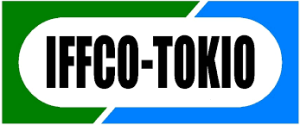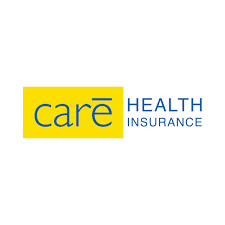Virechana is the purgative treatment. It cleans the digestive tract including small intestine, liver, gall bladder and pancreas. To eliminate pitta and other toxins, it works in a downward direction. Virechana eliminates harmful toxins from blood also. It treats many disorders like chronic headaches, urinary problems, skin diseases and allergies. Herbs and medication induces the purging process and cleans the entire system.
Benefits of Virechana
Virechana Therapy has several benefits like:
- In case of accumulation of Pitta dosha, Virechana helps in detoxifying the body.
- Virechana helps patients with heart disease, asthma and diabetes. It is also beneficial for treating problems like piles, constipation, jaundice and inflammations.
- Virechana helps in deep cleaning of the whole gastrointestinal tract. It also cleans the body from poisoning.
- Various skins disorders and allergies can cure easily by Virechana treatment.
Virechana is done by purgative substances. These medicines help in smooth bowel movement and cleansing the gastrointestinal tract thoroughly.
Some of those substances are like Aloe vera, Bhumi, Amalaki, Salt, Cow’s urine, Mango juice, Triphala and castor oil. Other than these items, cow’s ghee, flax seeds and Raisins also plays a vital role in this treatment.
How does this procedure work
The whole procedure of Virechana treatment completes into three stages of pretreatment, treatment and post-treatment.
Preparatory therapy is of 5-7 days and includes oleation. It is done both internally and externally. The right time for administration of medicines for Virechana is early morning. The patient needs to abstain from physical activities and stress. The patient should analyze the following things for the doctor:
- frequency, odour and quantity of bowel movement
- presence of mucus in stool
- Consistency of stool is checked. It can be hard, soft, loose, watery.
- any unusual symptoms like cramping or pain
Transitions in the gastrointestinal tract by purgatives are as follows:
- It moves through mouth and touches down in oesophagus by swallowing reflex
- The elements reach in the stomach and take time to digest. The time depends on the dosage form received.
- Form stomach it reaches to the small intestine and gets digests by different juices and acids present.
- Large intestine plays the role of absorption and leaving behind the extra waste.
- The mass peristaltic movement pushes faecal material into the rectum.
- Stretch receptors in the rectum stimulates and initiate reflex to empty rectum.
- The pressure, along with voluntary contractions of abdominal muscles, opens the internal anal sphincter and the faeces expells through the anus.
During treatment of Virechana, cold drinks, excessive exercise, sexual activity and cold baths are not advisable at all.
Patient need to take rest in a warm and cosy place.
Once procedure completes, patient should not take heavy food stuffs for 3 to 5 days. Because body needs time to restore, after the procedure. Once the procedure completes-
- Patient feels energetic
- The symptom of the condition subsides.
- Patient feels light and appetite improves.
Indications For Virechana
- Most pitta genic disorders: Illnesses like gastritis, stomach and intestinal ulcers, acne, eczema can develop other skin diseases such as furuncles and abscesses, as well as liver infections can also occur due to pitta effect.
- Skin diseases: Acne, eczema, seborrheic dermatitis, skin cancer and psoriasis indicate the need for Virechana treatment.
- Chronic fever: Persistent (chronic) fevers are the ones lasting more than 10 to 14 days. Such illnesses cause weakness and dullness with mild fever all the time.
- Haemorrhoids (piles): swollen veins in the lower part of the anus and rectum which causes pain and discomfort.
- Abdominal tumours (gulma): weight gain and symptoms such as abdominal discomfort, pain, and bloating are visible. It may change the shape of the abdomen.
- Splenomegaly: It is the enlargement of the spleen.
- Hepatomegaly and Jaundice: It is the condition of having an enlarged liver.
- Worms: Worms are the long cylindrical tube-like body with no limbs eyes.
- Erysipelas: It is a severe bacterial infection affecting the skin. Erysipelas affects the upper dermis and in later stages extends into the superficial cutaneous lymphatics.
- Gout: It is sudden, severe attacks of pain-causing redness, swelling and tenderness in the joints.
- Glaucoma: The damage to the optic nerve occurs because of the increase in internal eye pressure.
- Attention Deficit Disorder (ADD): It is a neurological disorder which affects the functioning of the brain and can cause memory loss. It also affects the concentration power.
Contraindications for Virechana
- Childhood and Old age
- Diarrhoea and Dehydration causing Debility and Weakness
- Bleeding from rectum or lung cavities with a Prolapsed rectum
- Excess snehana or svedana
- Foreign body in the stomach after Vamana or basti
- Acute fever with a thin or weak body
- Severe, chronic constipation with hard stool causing Ulcerative colitis.
Types of Virechana
Here are the different Virechana sub types according to use of the medicines
Purvakarmayukta Virechana
- It is complete and actual procedure from classical Virechana.
- Only an Ayurvedic Doctor Vaidya can guide you for complete and successful Virechana.
- Therefore this is not the procedure which you can do at home.
- Purvakarmayukt means- where pre-procedure completes before the main procedure- the classical method of Panchakarma.
- Purva karma includes- Snehana and Svedana.
- Snehana is – taking Ghee/Oil/Bone Marrow Soup for a period of 3 to 7 days.
- Snehana helps in dissolving fat soluble toxins.
- Svedana is the technique to cause sweating by heat.
- Once these two Purvakarma completes- patient goes for main procedure of the Virechana.
- Because this is comprehensive procedure- thus in all diseases – for therapeutic purpose, this procedure is important.
- It is advisable for a patient to go for this procedure in Indoor facilities, so that a physician can observe all the things properly.
Rutu-Anusari Virechana
It is a type of Virechana which helps in treating the symptoms of pitta prakopa. The symptoms include mouth ulcers, runny nose, skin lesions, and drowsiness & digestion problems.
Sadhyo-Virechana
Sadhyo means- immediate.
So this is the type of Virechana, which a physician chooses for quick removal of all the fecal materials inside your intestines. This subtype is for mild to moderate conditions.
Most of the times, this procedure is done just before starting some medicines. Because clear intestines help in better assimilation of the medicines.
Nitya –Virechana
In skin diseases and many other neurological diseases, it is important to keep the intestines clean. For that some “mild” medicines help in cleaning the bowel on regular basis.
Nitya is – daily.
So this subtype continues, regularly.
BUT this is not about using bad purgatives with Senna leaves. The products available in market in name of cleaning the intestines are not the same, what we use medically in Nitya Virechana.
The nitya virechana medicines are neither habit forming nor harmful for the intestinal mucosa.
Punha-Punha Virechana
Where we cannot remove all the doshas at a single time. It is important to do the Virechana again and again.
So this is the sub type where the procedure of Virechana continues on regular intervals.
It is one of the most effective techniques.
How Does Virechana Work
Purgatives eliminate excess Pitta from its site in the liver, gallbladder, and small intestine (it does not deal with the large intestine). The bitter purgatives like rhubarb, senna, or aloe also clean the liver and gallbladder decongest bile and remove obstructions to its flow. These herbs help in Pitta and liver disorders (e.g., gallstones). Because this cleansing weakens the digestive fire, therefore we cannot perform Virechana in Vata diseases. Kapha Doshas, however, benefit from this therapy, as they have excess bile, congestion, fat, or phlegm.
Benefits of Virechana
This is the simplest method of Panchakarma and has most easily observed effects. It is an excellent method to heal various conditions, including abdominal tumours, haemorrhoids, smallpox, patches of skin discoloration on the face, jaundice, chronic fevers, and enlarged abdomen.
Virechana karma is relatively easy and painless procedure comparative to Vamana.
Because passage of the virechana is natural, not opposite like Vamana. Therefore nn comparison to Virechana has less chances of complication.
It also helps constipation, old fevers, acute diarrheal, dysentery, food poisoning, kidney stones, boils, carbuncles, excess bile, or toxic blood conditions. For those who have not had Vamana, there are 3-5 or 7 days of snehapana, followed by 3 days of body oleation and sudation before beginning Virechana (purgation). If Virechana follows a Vamana therapy, then after the 7 days of proper diet (samsarjana), 2 days of regular meals are eaten. On the 9th day, snehapana (drinking ghee) is begun for 3 days. The following 3 days persons receives oil abhyanga and sudation for three additional days. On this 15th day (since starting samsarjana) Virechana is begun. If sudation (sweating) is contraindicated, then Virechana begins after the third day of snehapana (drinking ghee).
Contraindication of Virechana
Virechana is not recommended for those people with recent fevers, poor digestion, bleeding diseases of a downward nature (e.g., haemorrhoids), ulcers, rectum ulcers, and diarrhoea. Nor is it recommended for those who have recently received a decoction enema, have hardened feces, suffer from TB, and are greatly lubricated. It is not used for the very young or very old, the weak, debilitated or emaciated, while pregnant, during or immediately before menstruation, or with prolapse of the stomach or uterus.














